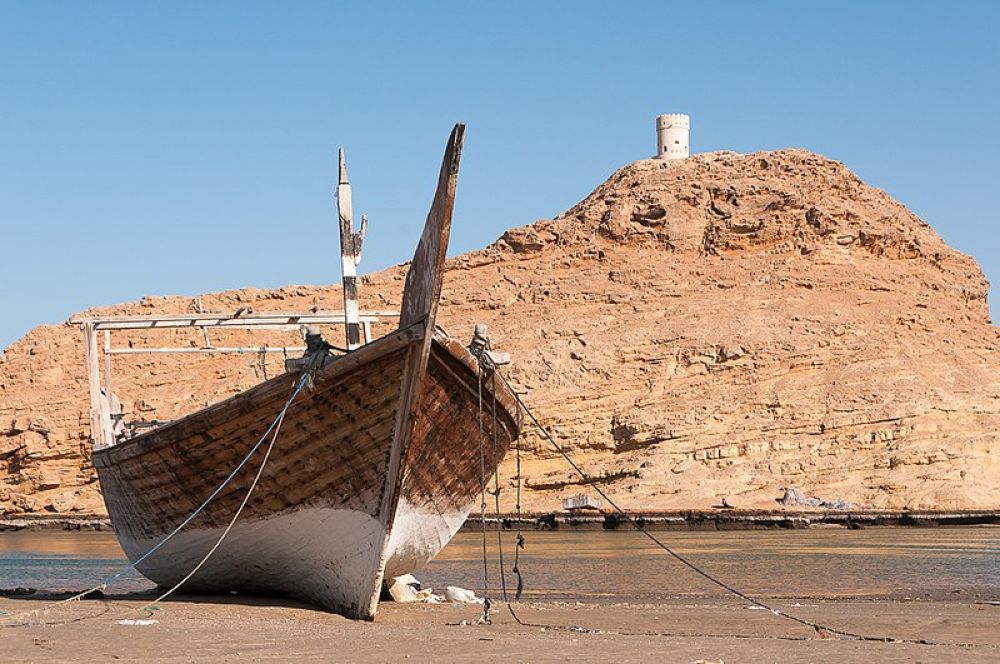

Located on the northeastern coast of the Sultanate of Oman, the city of Sur has been synonymous with maritime activities for centuries. Historically, it was a pivotal trading port, playing a significant role in maritime commerce across the Indian Ocean. Sur's history is particularly famed for its traditional craft of dhow building, an art that has been passed down through generations, making it an integral part of Omani cultural heritage.
Dhow building in Sur dates back to the 6th century, when this sea-faring town was a destination for merchants from as far afield as East Africa, India, and beyond. The dhow yards of Sur were the heart of this vibrant maritime trade, with the town being one of the most famous dhow-building centers in the world. Dhows constructed here were known for their durability and elegance, with Omani sailors often venturing as far as China. During the 19th century, Sur experienced a golden age of prosperity thanks to its shipbuilding prowess and strategic location on the trade routes.
In the 20th century, the advent of steamships and later, container shipping, led to a decline in dhow building. However, the tradition has been preserved as a cultural legacy, with skilled craftsmen still constructing these magnificent vessels by hand in the traditional way. The dhow yards of Sur are some of the few remaining places in the world where visitors can witness this ancient craft.
In recent years, the dhow yards of Sur have become an increasingly popular tourist destination. Visitors flock to the area to watch the dhows being built and repaired using age-old methods and tools. The trend is towards experiential and cultural tourism, where travelers seek to immerse themselves in local traditions and practices.
Oman has embraced this by opening up the dhow yards to tourists, offering guided tours that provide an insight into the history and techniques of dhow construction. The tourism authorities have also been working to preserve and promote the dhow building craft, recognizing its value as a cultural and historical asset.
Sustainable tourism is also on the rise, with visitors increasingly aware of their environmental footprint. The dhow yards are a testament to sustainable practices, using natural materials such as wood and coconut fiber to construct vessels that have been plying the seas for centuries.
When visiting Sur, travelers can take a walk along the waterfront to the dhow yards, where the sweet fragrance of cut timber fills the air, and the sounds of hammers and saws echo through the shipyard. Tourists may even get the opportunity to speak with the shipbuilders, gaining personal insights into their craft.
The Sur Maritime Museum is another spot not to be missed, offering detailed displays of the city’s maritime history and the evolution of dhow building. The museum is an excellent complement to the physical dhow yards, giving visitors a broader context of Sur’s historical importance as a maritime hub.
Alongside the dhow yards and museum, visitors to Sur can enjoy beautiful beaches, a charming old town, and nearby attractions such as the Ras Al Jinz Turtle Reserve, where endangered green turtles come to nest.
The dhow yards of Sur offer a captivating glimpse into Oman's seafaring past and represent an essential part of the country's rich heritage. As Oman continues to develop its tourism sector, the preservation and celebration of this unique craft ensure that the romance and tradition of the dhow live on for future generations to appreciate.